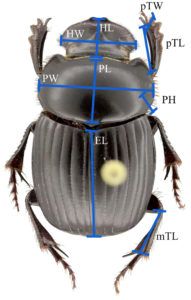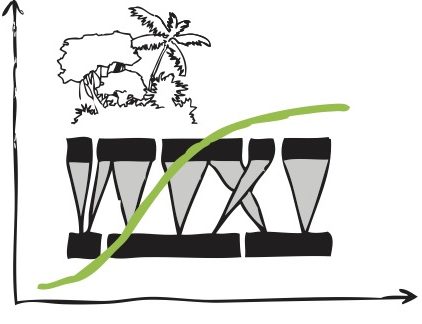Species differ in their shape, morphology and function. But individuals within a species can be highly variable, too. Such variation likely results from responses to different environmetal conditions. Diego Marín-Armijos, Adolfo Chamba-Carrillo and Karen Pedersen (SP6) studied variation between individuals within a species, an Ecuadorian dung beetle. They compared individuals from an intact Amazonian forest versus individuals from pastures resulting from forest conversion. Size variation for this burying dung beetle is huge (body length range from 8 to 26 mm). Overall, individuals from forest are larger than those from grasslands. In turn, individuals from grassland are more spherical, have wider heads and stronger protibia – both play an important role for dung burial. They also have a stronger pronotum, possibly related to dispersal. This case study nicely illustrates how species may succeed in – and possibly adapt to – altered conditions in disturbed habitats.
Marín-Armijos D, Chamba-Carrillo A, Pedersen KM (2023) Morphometric changes on dung beetle Dichotomius problematicus (Coleoptera: Scarabaeidae: Scarabaeinae) related to conversion of forest into grassland: A case of study in the Ecuadorian Amazonia. Ecology and Evolution 13: e9831


